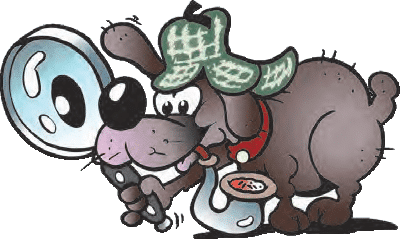“Foods with limited ingredients are a good place to start,” says Judy Morgan DVM, CVA, CVCP, CVFT. “Start with a ‘novel’ protein, meaning one your dog has not eaten in the past. Rabbit, duck, pork or fish tend to be good choices. Rabbit is one of the least allergenic. Some people will use venison or lamb. New foods are hitting the market with very novel proteins such as alligator, emu and llama. But owners also have to look at the secondary ingredients. If the initial food contained peas or other legumes, the new food should contain a different starch — maybe potatoes or oats or brown rice.”
There’s also what’s called a hydrolyzed protein diet. “These diets usually have hydrolyzed proteins in which the proteins are broken down into very small pieces and are able to elude the immune system,” says Megan McGlinn, VMD.
Defining an elimination diet is the easy part. It can take a bit of sleuthing to determine which food is the problem. But that sleuthing shouldn’t be considered a DIY project — your veterinarian should be your lead detective.
“A lot of pet owners do it on their own but they don’t do it methodically, so they just keep switching diets,” cautions Cailin Heinze, VMD, MS, DACVN, board-certified veterinary nutritionist. “If pet owners are worried the issues are food related, try one diet with different ingredients. If that doesn’t make a difference, they should then work with their vets.”
Like many other things in life, this doesn’t have a one-size-fits-all solution. “There is no one best dog food for food allergies. It is dependent on the dog and will vary on a case by case basis,” Dr. McGlinn says, also endorsing you get your veterinarian’s recommendation based on your dog’s health history.
And it may not be quick. “A true elimination diet can take months to determine what the dog can tolerate,” according to Dr. Morgan.
The good news is that once it has been determined that diet helped resolve the issue, the diet that works can be fed long-term, says Camille Torres, DVM, DABVP-Canine/Feline.
The Cummings School of Veterinary Medicine at Tufts University, where Dr. Heinze is an adjunct associate professor, has a detailed handout for clients about the elimination diet process and includes the checklist below. It provides an overview of what you’ll be looking at before and during the diet trial, which is often six to 12 weeks.
Ensuring an accurate elimination diet trial
Before starting the diet trial, go through the following checklist. Be very strict during the trial in order to get accurate results.
✔ Make sure all family members understand the “OK to feed” and “do not feed” foods.
✔ Ask your primary care veterinarian about alternatives for any flavored medications (including chewable heartworm preventives), medications in gelatin capsules and flavored toothpaste.
✔ Discontinue feeding all table foods, commercial treats, rawhides, and other edible chews and flavored toys.
✔ Make sure that your pet will not have access to other pets’ bowls or other food sources.
✔ Wash your pet’s bowl thoroughly.
You’ll notice treats don’t appear on the list, but Tufts has your dog’s back. Again, check with your vet based on your dog’s needs.
✔ You can set aside some of your pet’s diet and put it in a clean treat jar to give as if they were special treats. In addition, you can bake the prescribed canned novel or hydrolyzed diets into small cookies to give as treats.
✔ If feeding a novel ingredient diet, you can make homemade treats using only the ingredients in the diet. For example, if your pet is eating a diet containing salmon and potato, he or she can be fed small amounts of cooked salmon or potato as treats if they stay within the recommended treat allowance and are compatible with any other nutrient goals.
Thumbnail: Photography ©PoulCarlsen | Getty Images
About the author:
Elizabeth Anderson Lopez is an award-winning writer based in Lake Forest, California. She and her husband have many pets, including two English Bull Terrier rescues named Dexter and Maybelene. You can contact her at fromconcepttocontent.com.






